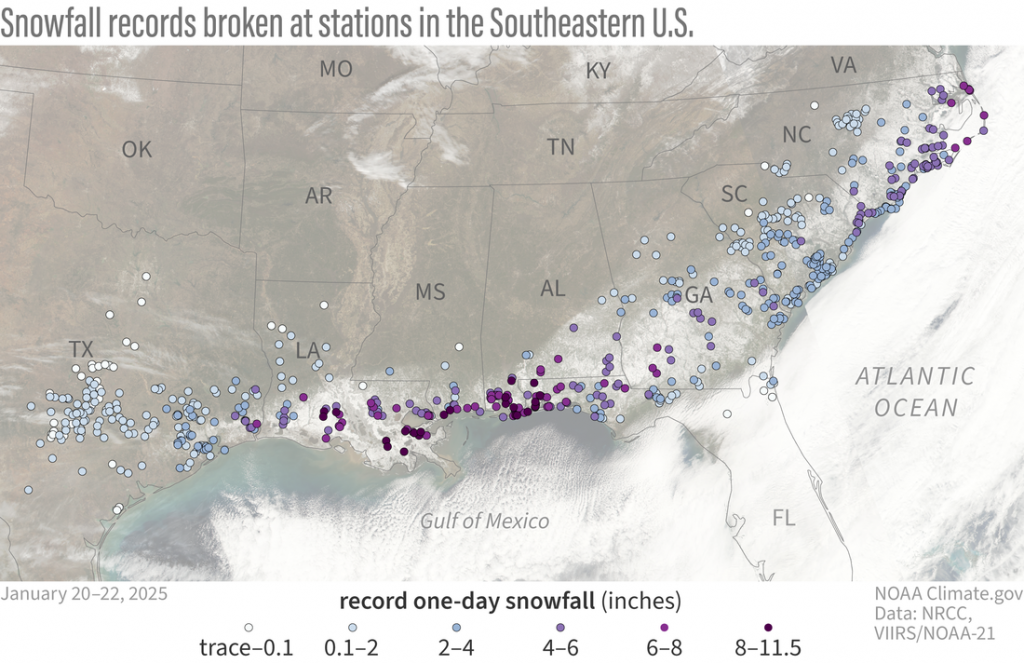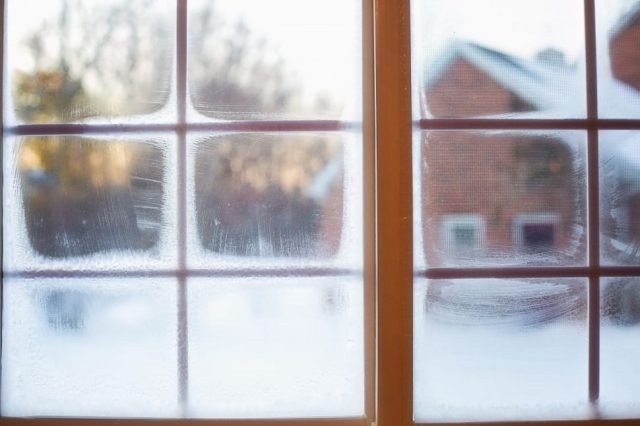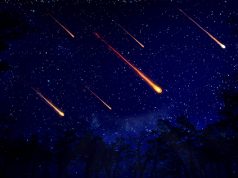
January 2025 will be remembered as a historic winter month for the southeastern United States, as an Arctic blast brought record-breaking cold temperatures and an unprecedented snowfall event across multiple states.
On January 19, 2025, an Arctic air mass plunged into the Southeast, setting the stage for a winter storm that delivered historic snowfall and record-low temperatures. Several locations in Louisiana shattered long-standing records:
- New Orleans Lakefront dropped to 26°F, the coldest temperature since records began in 1940.
- Baton Rouge recorded 19°F, the city’s coldest reading since 1935.
- Lafayette reached 4°F, breaking a record set in 1893.
- New Iberia saw its coldest temperature ever at 2°F since records started in 1948.

The storm began on January 20 in Texas before tracking eastward, bringing historic snowfall to Louisiana, Alabama, Mississippi, and even Florida.
- Beaumont-Port Arthur, TX saw 4.5 inches on January 21, its snowiest day since 1901.
- Baton Rouge, LA recorded 7.6 inches, the most snow since 1892.
- New Orleans, LA received 8.0 inches, breaking a record dating back to 1948.
- Thibodaux, LA got 8.5 inches, its highest total since 1893.
- Mobile, AL recorded 7.5 inches, its snowiest day since records began in 1881.
- Fernandina Beach, FL saw 4.0 inches, its biggest snowfall since 1917.
- Near Pensacola, FL, an astounding 10.0 inches fell on January 21, potentially rivaling Florida’s all-time snowfall record.
Hundreds of locations across the South reported new single-day snowfall records between January 20–22, making this one of the most significant winter storms in Southern U.S. history.
In a surprising twist, parts of Louisiana, Mississippi, Alabama, and Florida received over 10 inches of snow, surpassing snowfall totals in typically snowier cities, including Chicago, IL!
This storm had an unusual atmospheric setup. A deep dip in the jet stream allowed cold, dry Arctic air to collide with moist Gulf air, creating conditions similar to a Great Lakes lake-effect snowstorm.
The National Weather Service (NWS) in Mobile, AL, noted that the high snow-to-liquid ratio (10:1 to 15:1) led to light, fluffy snow, more commonly seen in mountain regions than the Gulf Coast.
Scientists are investigating whether climate change played a role in this extreme event. Some research suggests that melting Arctic sea ice could disrupt the polar vortex, making Arctic outbreaks and extreme cold spells more likely in the U.S. However, experts note that while record-breaking snow and cold can still occur, overall winter temperatures are warming due to climate change.
The January 2025 snowstorm will go down as one of the most extreme winter weather events in Southern U.S. history, leaving behind unprecedented cold, record-breaking snowfall, and a winter scene rarely seen this far south.










